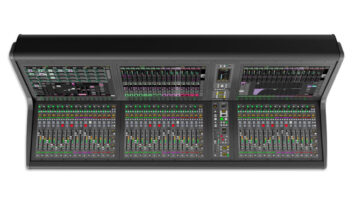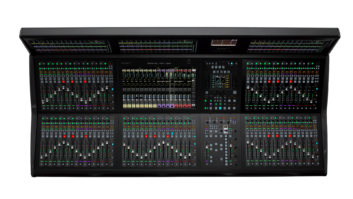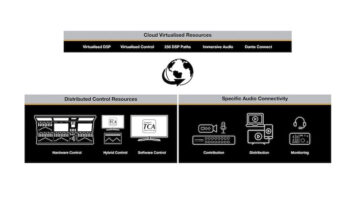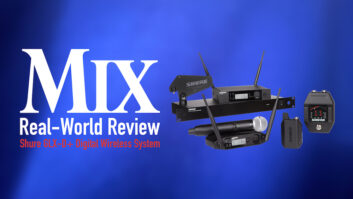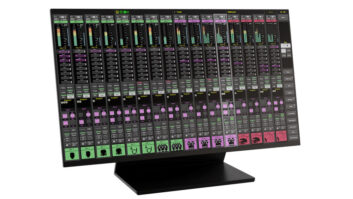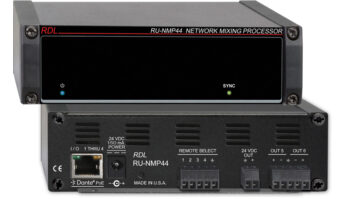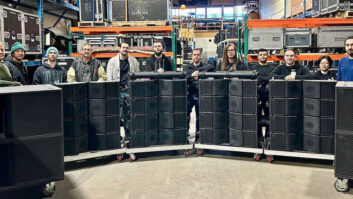
Although many people (including myself) never saw the point of musical collaboration via the now-defunct Rocket Network, in retrospect, it’s obvious that this early attempt at collaborative workflow was the software-prototype paradigm for DigiDelivery, Digidesign’s new appliance for network file exchange. The hardware component comes in two configurations: Digidesign Serv|GT ($9,995) and Digidesign Serv|LT ($3,295). Both versions require one rackspace, and both Ethernet-connected server appliances ship preconfigured with server software for ease of setup. There’s also a client application that may prove to be the primary selling point for studio owners who have struggled for years to “idiot-proof” FTP transfer and Web access for client approval and sign-off for project data.
DigiDelivery features drag-and-drop delivery, automatic e-mail notification, Web-based administration, secure storage and transmission, and comparatively fast data transfers. Any kind of file may be losslessly compressed, encrypted for transfer (with 128-bit encryption) and decrypted by the target recipient.
Pro Tools users will especially appreciate that the transmitted delivery retains the folder hierarchy of the original system. If the original project was distributed across multiple drives, then the drives are represented in separate folders in the delivery so that the original disk allocation is mirrored for the recipient. Also, if the original session was not in the session folder (for example, if it’s on the original user’s desktop), then DigiDelivery creates an alias, or shortcut, for the session and places it at the top of the delivery folder.
REQUIREMENTS AND CONFIGURING
DigiDelivery client software works with Windows XP SP1 (Home and Pro) and Mac OS X Version 10.2 or later. For Mac OS 9.1 or higher, you’ll need to have CarbonLib 1.6. The Windows XP Client “appears to work” on Windows 2000, but according to Digidesign, a fully qualified Windows 2000 client will be available by the time you read this.
One benefit of the new system is that you can send a delivery without owning the DigiDelivery appliance; you only need an account on someone else’s server. DigiDelivery does not require a subscription to a specialized network (such as the old Rocket Network) and you don’t need an account on a DigiDelivery appliance to receive a delivery.
Of course, owning the Digidesign Serv|GT or Digidesign Serv|LT is the only way to go if you want faster transfers, the ability to customize the system, automated reporting and customer support. Once the system is configured for your ISP or personal TX line, it’s simple to use, but getting to that point may involve a few calls to your ISP.
First, you’ll need a static or fixed IP address. That’s usually easy to acquire, but there may be an extra charge. If your ISP has an acceptable use policy (AUP) regarding servers (meaning you can’t have one), then you’ll either need to find another ISP or take the risk that one day you’ll try to send that important session to a client in Hong Kong only to find that your friendly ISP has decided to block ports. Outbound ports should normally not be blocked for static IP addresses, but you’ll need to verify this with your ISP.
You may need to pay an extra fee if your ISP restricts bandwidth to daily limits. Also, if you’re a cable modem user, then you may not be able to obtain the necessary bandwidth for upload to make large transfers feasible. The bottom line: If you want to send gigabytes of files over the Internet in a timely fashion, nothing beats having your very own T4 line running at 277.76 Mbps.
On my business cable setup, which supports upload at 356 Kbps and download at 4 Mbps, a 100-meg file took 43 minutes to transfer. Not bad if you need to send an album’s worth of material halfway around the world, but sending a 36-gigabyte Pro Tools session to a co-worker on a movie soundtrack could take more than a week.
Fortunately, like network capacity, the DigiDelivery system is scalable. If your needs are client approvals for short commercials and stereo masters, then you’ll find the Digidesign Serv|LT will suit your requirements. Serv|LT uses 1000 Base-T (Gbit) Ethernet with an 80GB internal drive, 20 pending deliveries, one standard account and unlimited guest accounts.
The standard/guest discrimination is used to prevent hijacking and sabotaging the server. Those with a standard account can send files to anyone, so those files should be limited to administrators and people with high security ranking. Guest accounts can only send to standard accounts, not to each other. Give these to your clients and contractors.
I always have a queasy feeling when someone gives me access to his/her FTP server and I see a lot of folders without password protection: Should I see if they open and warn the FTP owner, or should I leave them alone and let the owner stay unprotected? With a guest account, your client won’t have to make a moral choice when you need an approval. All they need is an e-mail address.
Larger facilities will want the added capacity of the Serv|GT, which includes 1000 Base-T (Gbit) Ethernet, a 500GB internal drive, unlimited pending deliveries, unlimited standard accounts and unlimited guest accounts.
DIGIDELIVERY IN ACTION
I was skeptical about the usefulness of DigiDelivery until I received a delivery from a friend via e-mail. I simply clicked on a link, let the client’s software download and clicked on the encrypted key to receive my “package.” I thought of the phone calls I had made to clients to help them wind their way through the FTP jungle. It was obvious that DigiDelivery had the potential to save me hours of support time, not to mention feeling irritated and dismayed when carefully given advice doesn’t work.
With DigiDelivery, the sender logs on to the server with his or her account, drags files and folders onto the Send Wizard, enters up to 100 recipient e-mail addresses (with an optional message) and selects Next. That’s it. DigiDelivery gathers the files, encrypts them and sends them to the recipient. They do not need an account — just an e-mail address — to receive a delivery.
The only problem I ran into when setting up the Serv|GT was that the documentation for the setup section distinguishing between WANs and LANs was unclear. I mentioned this to the Digidesign support crew and the documentation was scheduled to be updated by press time.
Both units ship with an internal CD-ROM reader and several “gozintas and gozouttas” that are not implemented at this time. DIN jacks, monitor port, serial port, parallel and USBs currently do not function and Digidesign warns against attempting to use them at the risk of damaging the unit.
WHO NEEDS ONE?
If you’ve grown weary of hand-holding clients through the FTP jungle, if your clients are halfway around the world or if you just want to concentrate more on audio and less on network administration, then you’ll be happy to add either the Digidesign Serv|GT and Digidesign Serv|LT to your machine room. The stress reduction alone is worth the price. You may have to pay for extra bandwidth, but that’s the cost of doing business when you want client satisfaction and the confidence that your studio can deliver product in a timely fashion.
Digidesign, 650/731-6300, www.digidesign.com.
K.K. Proffitt is the owner of JamSync, a multichannel surround mixing, mastering, DVD authoring and encoding facility in Nashville.

